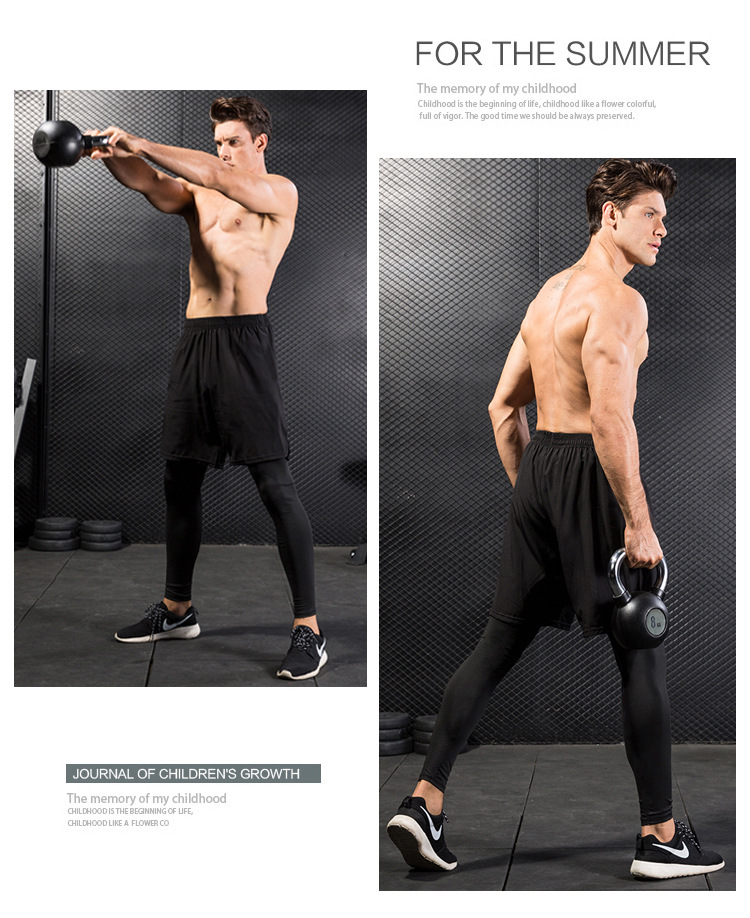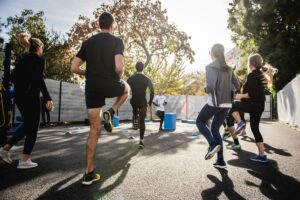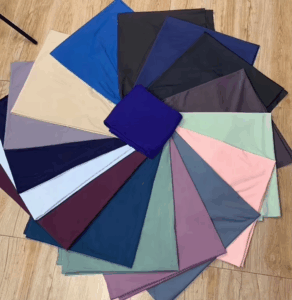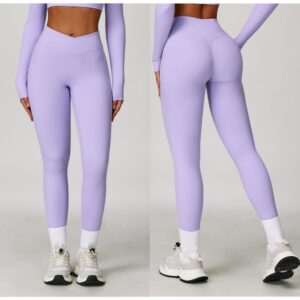Introduction
The sight of men pairing leggings with shorts at the gym has transitioned from a niche trend to a widespread phenomenon in recent years. This layered attire, which combines the form-fitting properties of leggings with the casual coverage of shorts, embodies a fusion of practicality, style, and evolving cultural norms. To understand why this clothing choice has gained popularity, it’s essential to explore its multifaceted reasons, ranging from technological advancements in athletic wear to shifts in societal attitudes toward fashion and fitness. Here, we delve into the key factors driving this trend, with expanded explanations and context.
- Functional Performance and Comfort: Engineering for Optimal Movement
- Compression Technology for Enhanced Performance
Leggings are often designed with compression fabrics (e.g., nylon-spandex blends) that apply gentle pressure to muscles. This not only improves circulation but also stabilizes joints during intense activities like weightlifting, high-intensity interval training (HIIT), or plyometrics. The added support reduces muscle fatigue and the risk of strains, making workouts more efficient. For example, basketball players may wear leggings under shorts to protect their knees and thighs during sudden changes in direction. - Friction Reduction and Skin Protection
During activities that involve repetitive leg movements—such as cycling, sprinting, or lunges—skin-on-skin friction can cause chafing and irritation. Leggings act as a barrier, minimizing discomfort and preventing rashes. Additionally, some leggings feature anti-microbial treatments or moisture-wicking properties, which inhibit bacterial growth and odor, ensuring hygiene even during prolonged workouts. - Temperature Management and Climate Adaptability
In cold environments (e.g., winter outdoor runs or air-conditioned gyms), leggings provide an insulating layer that retains body heat. Conversely, in hot conditions, their breathable fabric allows sweat to evaporate quickly, preventing overheating. Layering with shorts creates a versatile system: the leggings regulate temperature, while the outer shorts offer protection from the sun or equipment (e.g., gym machines). - Mobility and Range of Motion
Leggings offer 360-degree flexibility, allowing unrestricted movement in all directions. This is crucial for sports like yoga, martial arts, or dance, where poses or techniques require deep stretches and dynamic movements. Layering with shorts adds coverage without sacrificing freedom of motion—a key consideration for athletes prioritising agility.
2. Aesthetic and Style Preferences: Fashion Meets Fitness
- Modern Aesthetics and Body Confidence
Contemporary fitness culture emphasises sleek, minimalist looks. Leggings, with their form-fitting designs, accentuate muscle definition and create a streamlined silhouette. Pairing them with shorts allows men to showcase their athletic physique while maintaining a sense of modesty. For many, this aesthetic aligns with a desire to look polished and professional, even during workouts. - Colour Coordination and Personal Expression
Leggings come in a wide range of colours, patterns, and designs, from solid neutrals to bold prints. Layering with shorts enables individuals to experiment with colour blocking or statement patterns. For example, a pair of neon leggings under black shorts creates a striking contrast, reflecting the wearer’s personality or mood. This allows for creative self-expression beyond the traditional gym uniform. - Brand Loyalty and Status Signalling
High-performance leggings from brands like Nike, Lululemon, or Under Armour are often associated with quality and innovation. Wearing these brands—visible through a layer of shorts—can signal one’s commitment to fitness or status within the community. Some enthusiasts collect limited-edition or tech-forward leggings, using the layering technique to showcase their favorite pieces.
3. Practicality and Hygiene: Beyond the Workout Session
- Sweat Separation and Odour Control
Leggings absorb sweat directly from the skin, preventing it from saturating the outer shorts. This separation reduces the likelihood of odor retention in the outer layer. For gym-goers who transition between classes or workouts without changing clothes, this becomes a hygiene essential. Additionally, washing leggings separately from shorts can prolong the lifespan of both garments. - Multi-Environment Versatility
Athletes who train in diverse settings benefit from this layering strategy. For instance, a runner transitioning from indoor treadmills to outdoor trails can remove shorts for cooler weather without compromising support. Similarly, those who practice both strength training and cardio in a single session appreciate the ability to adjust coverage without changing outfits. - Injury Recovery and Rehabilitation
Post-workout or injury recovery often requires compression wear. Wearing leggings under shorts during a rehab session allows therapists or trainers to easily assess form and progress while maintaining professional attire. This dual functionality bridges performance and recovery needs.
- Sport-Specific Adaptations: Tailored Solutions
- Cycling and Indoor Sports
In cycling, leggings (often called “bike tights”) are essential for reducing wind resistance and providing padding for the seat area. Layering with shorts offers added protection against abrasions in case of falls. Similarly, sports like basketball or soccer may use leggings under shorts to prevent thigh-to-thigh contact during physical play. - Martial Arts and Functional Training
Disciplines like Muay Thai or Brazilian Jiu-Jitsu demand full-body flexibility. Leggings under gi shorts (traditional martial arts uniforms) enhance mobility while maintaining tradition. The layered look has also become popular in CrossFit or obstacle course racing, where agility and durability are paramount.
- Cultural and Social Shifts: Challenging Norms
- The Rise of “Athleisure” Culture
The blurring of workout and everyday attire has normalised the idea of wearing performance gear beyond the gym. Layering leggings under shorts reflects this trend, allowing men to seamlessly transition from training to running errands or meeting friends. Social media influencers and celebrities further popularize this look, democratizing what is considered “acceptable” gym attire. - Breaking Traditional Gender Stereotypes
Historically, tight-fitting clothing for men was often stigmatized. However, the fitness industry’s embrace of compression wear has challenged these norms. As more male athletes openly wear leggings, the association with femininity has diminished. Today, it’s seen as a symbol of health-consciousness and confidence rather than a taboo. - Community and Identity Building
Fitness communities thrive on shared aesthetics. For groups like CrossFit enthusiasts, Parkour practitioners, or urban runners, specific layering styles become badges of membership. Wearing leggings under shorts can signal affiliation and foster a sense of belonging within these subcultures.
6. Personal Comfort and Individualisation
- Sensory Preferences
Some individuals find the feeling of leggings against their skin more comfortable than loose shorts alone. The snug fit provides a secure, “second-skin” sensation, enhancing focus and body awareness during workouts. Layering with shorts addresses any concerns about draftiness or added coverage. - Body Shape and Confidence
Men with different body types may prefer leggings to balance proportions. For example, those with longer legs might use shorter shorts paired with high-waisted leggings to create a visually balanced silhouette. This customisation empowers individuals to feel confident in their own bodies, regardless of shape or size. - Experimentation and Innovation
The fitness industry constantly innovates, introducing new materials (e.g., recycled polyester, cooling fabrics). Enthusiasts enjoy testing these advancements through layered outfits. For instance, someone might experiment with leggings with embedded cooling technology under mesh shorts to optimize comfort in humid climates.
7. Additional Considerations: Beyond the Gym
- Post-Workout Fashion
As fitness becomes a lifestyle, men increasingly prioritise how they look after workouts. Layered leggings and shorts create a polished ensemble suitable for post-gym activities like brunch or meetings. This aligns with the growing trend of “sweatshirts as streetwear.” - Health and Safety
In some gyms or studios, wearing leggings under shorts may be a practical safety measure. For example, in group classes where equipment is shared (e.g., reformer Pilates), leggings prevent skin contact with machines or mats, reducing the risk of infections. - Regional and Climatic Variations
In colder regions, leggings under shorts serve as a base layer for winter workouts, preserving warmth without bulk. In tropical climates, lightweight leggings paired with breathable shorts help manage humidity. This adaptability demonstrates how attire choices evolve based on environmental needs.
Conclusion: A Layered Approach to Modern Fitness
The practice of wearing leggings under shorts at the gym represents a convergence of science, culture, and individual expression. From the biomechanical benefits of compression to the evolving aesthetics of athleisure, this layered style addresses a wide range of needs. As athletic apparel continues to advance and societal norms around men’s fashion become more inclusive, the popularity of this combo is likely to persist. Ultimately, its appeal lies in its ability to balance functionality, confidence, and style—a trifecta that resonates with today’s fitness enthusiasts.
Whether it’s optimising performance, expressing personal taste, or adapting to diverse environments, the leggings-under-shorts trend embodies the modern gym-goer’s holistic approach to health and self-presentation. As attitudes toward fitness attire continue to evolve, this layered look will likely remain a staple in gym locker rooms and streets alike.




